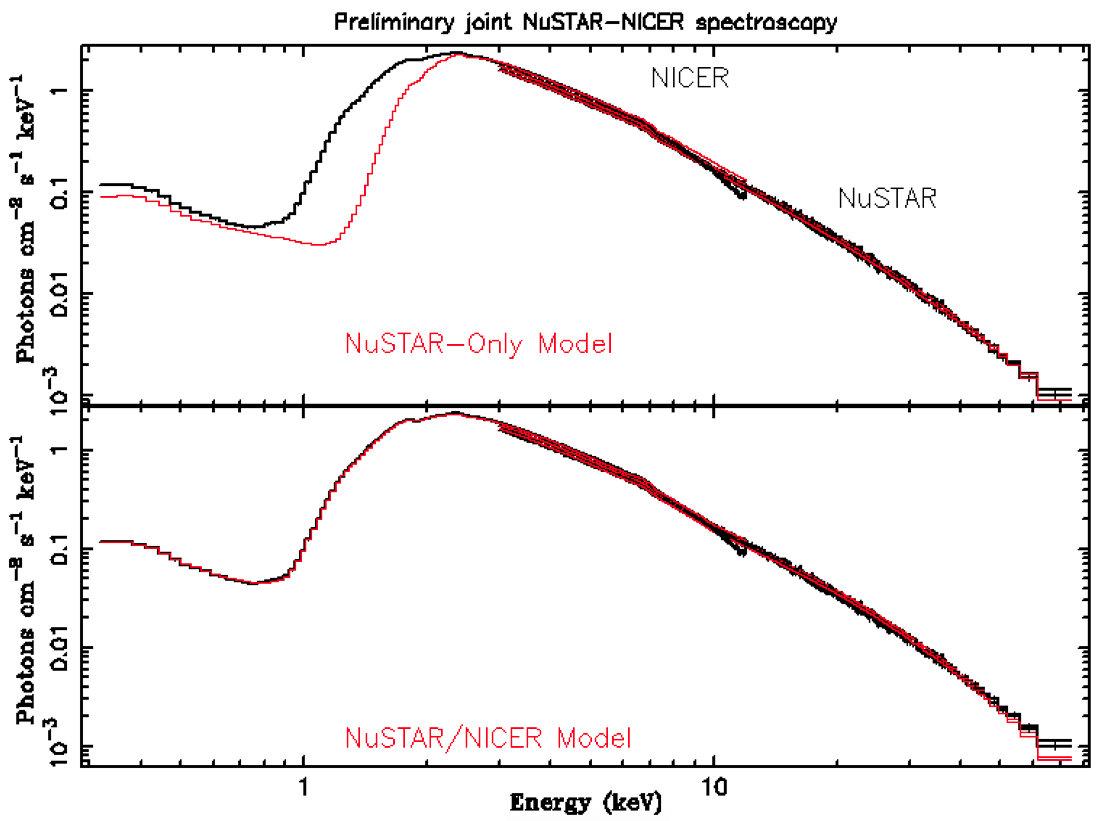NICER / ISS Science Nugget for May 17, 2018NICER/NuSTAR joint fit helps clarify spectrum of MAXI J1535-571Stellar mass black holes spend most of their time in quiescence (with little to no accretion and very low X-ray luminosity), but in their luminous outbursts they are ideal for studying black hole accretion. Much of the physics that drives these outbursts is yet to be determined. For example, how does the accretion disk around the black hole change during these enormous outbursts? To answer this question, we require accurate estimates of not only the disk spectrum but also the effect of absorption by the cold interstellar medium (ISM). This is an area where NICER excels: its soft X-ray sensitivity covers precisely the energy range most affected by changes in the luminous disk and by the ISM. A prime opportunity came last fall, when a new source called MAXI J1535-571 went into outburst. NICER observed this source frequently during its incredibly bright outburst, including coordinated observations with NuSTAR (a hard X-ray telescope that lacks NICER's low-energy response).
Even from this preliminary look, it is clear that NICER will revolutionize studies of accretion disks and black hole outbursts. NICER
|



